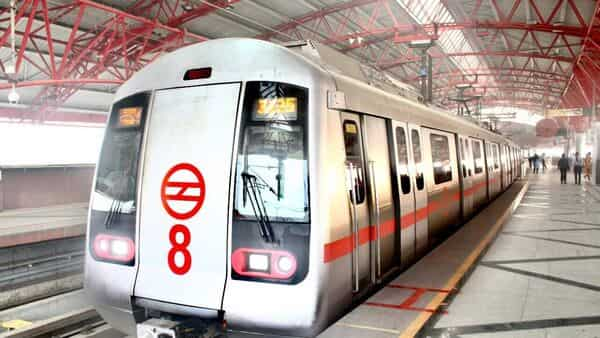
From its humble beginning in December 2002 with a corridor of just 8.2 km spanning six stations on the Red Line, the Delhi Metro has grown into a network of over 390 km in 2022, completing an eventful journey of 20 years of operations.
A special commemorative ceremony was held at Welcome metro station which was attended by Japan’s Ambassador to India Hiroshi Suzuki and Delhi Metro Rail Corporation’s (DMRC) Managing Director Vikas Kumar, among others.
Speaking fluent Hindi, Suzuki, who took a metro ride with Kumar to reach Welcome station, congratulated the DMRC on the occasion and said the Delhi Metro’s level of development has crossed that of the Tokyo Metro in the last 20 years.
“The Delhi Metro has contributed to deepening of the friendship between India and Japan,” Suzuki said.
This year, India and Japan are also marking 70 years of the establishment of diplomatic ties.
The Japanese envoy said the Delhi Metro has achieved “phenomenal success” in its journey of 20 years and transformed “Delhi forever”.
Suzuki, in his address, emphasised the diplomatic and cultural ties between the two countries and how the Delhi Metro exemplified it.
A special permanent exhibition marking 20 years of Delhi Metro operations was later opened at Welcome station by the Japanese envoy.
The exhibition showcases rare archival images of the Delhi Metro and old news clips. It also showcases the partnership of the Delhi Metro and the Japan International Cooperation Agency (JICA) and other Japanese organisations that have supported the Delhi Metro in its journey so far.
Saito Mitsunori, chief representative, JICA India Office was also present on the occasion and addressed the gathering.
DMRC chief Kumar said, “Over the last two decades, we have not only emerged as the mass transportation backbone of the entire national capital region of India but we have also been able to set new benchmarks in operational and construction efficiency, which has proved to the world that India is also capable of executing and operating public service infrastructure projects of such mammoth magnitude.”
However, this success story would never have materialised if friends from Japan had not extended their hand of cooperation and support, he said.
“We have always received timely financial support from JICA, which has helped in the rapid expansion of the metro network in Delhi-NCR. Various other Japanese agencies have also rendered technical and logistical support to our project,” Kumar said.
The DMRC today operates multiple corridors in the national capital and neighbouring cities.
The Delhi Metro began its commercial operations on December 25, 2002, a day after the then prime minister Atal Bihari Vajpayee inaugurated its first stretch, spanning 8.2 kilometres from Shahdara to Tis Hazari with just six stations.
To mark the completion of two decades of its operations, the Delhi Metro also ran a special train which was flagged off by Vajpayee on December 24, 2002.
“It is an exciting milestone for the DMRC and the special run of the six-coach train took place today between Kashmere Gate station and Welcome station on the Red Line,” a senior official said.
A day after the inauguration of the first-ever corridor in 2002, the rush was so massive that authorities had to issue paper tickets to handle the flow of passengers, officials had told PTI earlier.
DMRC trains, on average, run 400-600 km and 16-18 hours a day, according to officials.
The DMRC’s current network span is nearly 392 km with 286 stations (including the Noida Greater Noida Metro Corridor and Rapid Metro, Gurugram).
Rare images of the very first piling work done in the national capital for building the Delhi Metro and old newspaper clippings are among the archival documents which have been displayed as part of a permanent exhibition at Kashmere Gate station. The exhibition was opened last December by the DMRC.
The exhibition — ‘Tracing Delhi Metro’s Journey’ — was launched to mark the DMRC entering into the 20th year of its operations, the officials said.
The Red Line has now extended on both sides — to Rithala in Delhi and New Bus Stand (Shaheed Sthal) in Ghaziabad.
This story has been published from a wire agency feed without modifications to the text.
Download The Mint News App to get Daily Market Updates.